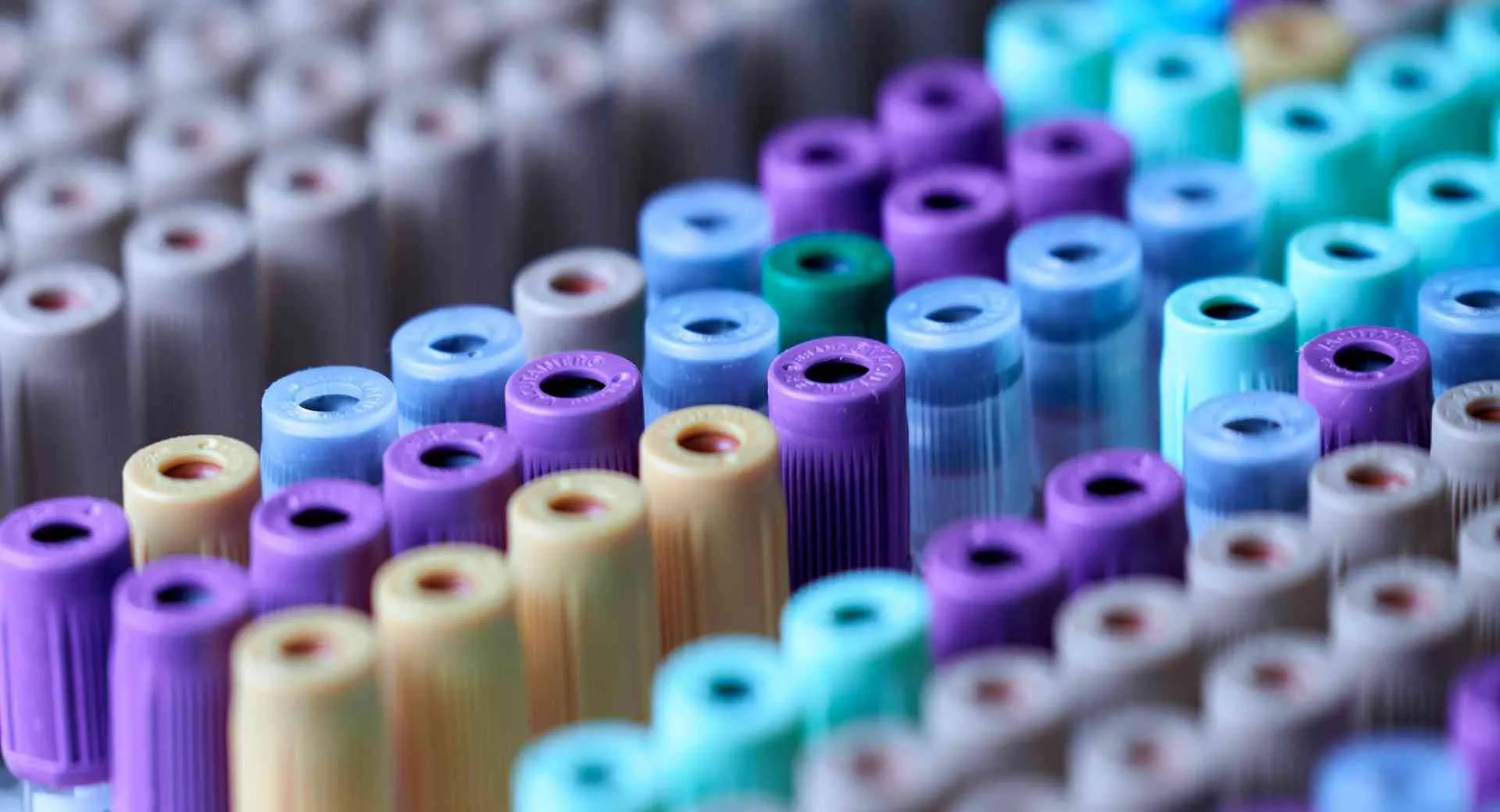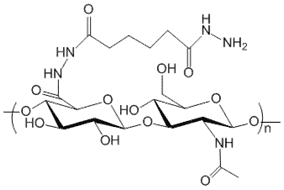Description
Hyaluronic Acid is functionalized with hydrazide groups using a short linker adipic acid dihydrazide (ADH). Purity: >95% powder. Degree of substitution (DoD): 5 mol % substitution unless the DoS is specifically noted in the catalog number. For example, HA-352-50% means 50% DoS for this particular product. Hydrazide is a reactive group specific for aldehydes resulting in acyl hydrazone linkages, and can be used in the linking of glycoproteins or carbohydrates in a site specific fashion following periodate oxidation. Hydrazide coupling may be performed at relatively low pH such as 5.0 to avoid competition reaction by primary amines. HA-Hydrazide with higher or lower hydrazide substitution ratio (e.g. 1% and 10%) may be offered through custom synthesis service. Hyaluronic acid synonyms: HA, hyaluronate, hyaluronan.
Properties
Name and Source: Hyaluronic acid (HA, Hyaluronan, Hyaluronate) is an anionic, non-sulfated glycosaminoglycan distributed widely throughout connective, epithelial, and neural tissues. CAS# 9004-61-9. Our HA products are produced via microbial fermentation. See Documents section for details.
Appearance: White, lyophilized powder, except dye-labeled HA reagents.
Solubility: Soluble in water and the solubility data varies with MW. Higher MW results in lowered solubility. Typically solubility ranges 5-50 mg/mL, that is, 0.5%-5%. Buffered solution at pH >6 enhances solubility due to deprotonation of carboxylic acid groups and formation of carboxylate salts. HA derivatives with hydrophobic groups will lower the solubility in water, and adding alcohol or DMSO to an alcohol-water or DMSO-water mixture can dramatically improve the solubility up to 200 mg/mL (20%).
Degree of Substitution (DoS): The standard DoS is 5% by default. Product variants with special DoS other than 5% is indicated in the product name and catalog number. For example, HA-301-30% means that the DoS is 30% for this particular product.
The substitution or labeling ratio is the percentage of HA disaccharide monomers that are functionalized with the functional groups. You may calculate the number of functional groups in each HA polymer chain by 1) dividing the MW of HA by the MW of one disaccharide monomer to derive the number of disaccharide monomers in HA; 2) then multiple the number of disaccharide monomers by the labeling ratio or DoS to get the number of functional groups in each HA polymer. See Documents section for details.
References
1. A hyaluronic acid conjugate engineered to synergistically and sequentially deliver gemcitabine and doxorubicin to treat triple negative breast cancer, Journal of Controlled Release, 2017, doi 10.1016/j.jconrel.2017.08.016, Text.
2. Functionalized Derivatives of Hyaluronic Acid Oligosaccharides: Drug Carriers and Novel Biomaterials, Bioconjugate Chemistry, 1994,5(4):339–347 2) Hyaluronic acid based scaffolds for tissue engineering—A review, Carbohydrate Polymers 2013, 92(2):1262– 1279.
Click here to view an expanded list of hundreds of publications citing Creative PEGWorks products.


